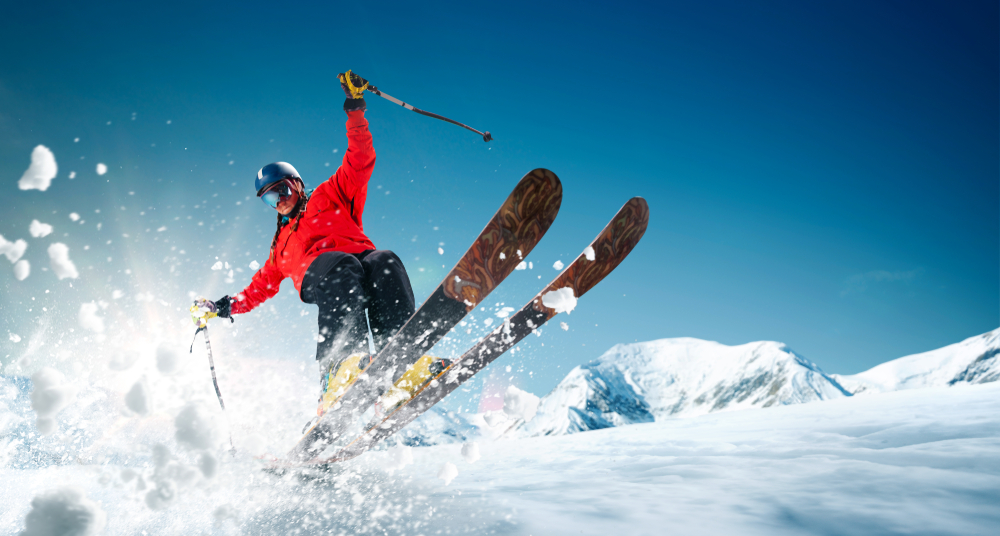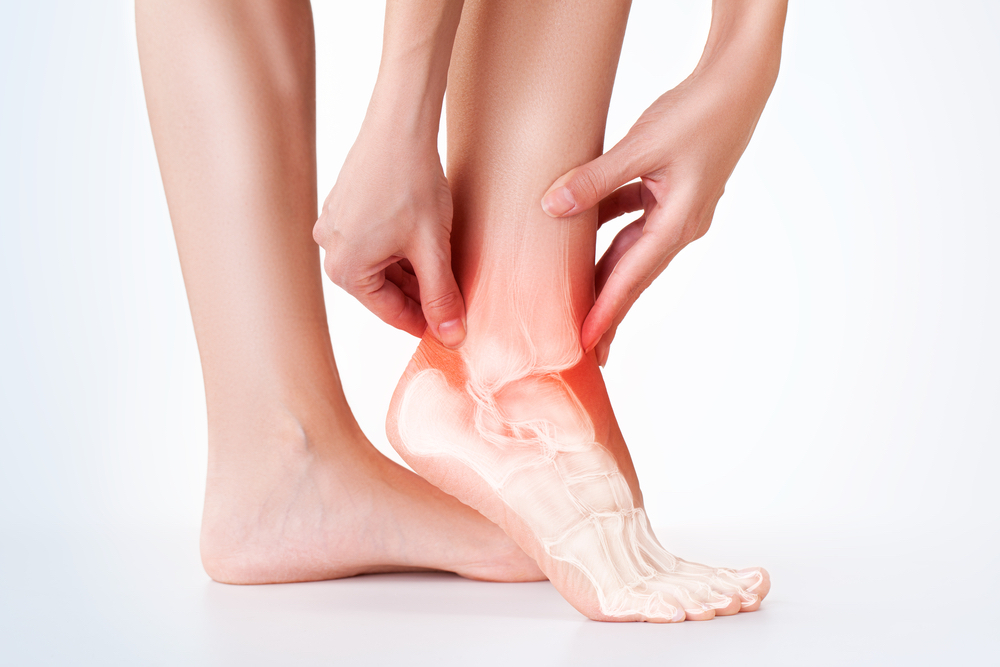 There are many common skiing and snowboarding injuries that could put you on the sidelines rather than the slopes this winter. While some accidents cannot be avoided, there are steps you can take to prevent injuring yourself. Read more below to learn about the most common skiing and snowmobile injuries and ways to prevent them.
There are many common skiing and snowboarding injuries that could put you on the sidelines rather than the slopes this winter. While some accidents cannot be avoided, there are steps you can take to prevent injuring yourself. Read more below to learn about the most common skiing and snowmobile injuries and ways to prevent them.
Skiing and snowboarding are some of the most popular winter sports in the U.S., even though they result in tens of thousands of treated injuries every year. Both skiing and snowboarding can result in sports injuries, but they tend to have slightly different injury patterns. Skiers are more likely to have knee injuries, resulting from twisting motions made during falls, while snowboarders tend to have more upper body injuries as a result of falling on an outstretched hand. There are also many injuries common to both types of winter athletes.
Knee Injuries
Skiers are more prone to knee injuries, as the sport involves more twisting and turning. A sign of these injuries is a popping sound during the motion.
- Anterior and posterior cruciate ligament (ACL/PCL) injuries: These are injuries to the ligaments that stabilize the knee, and often happen with sudden twisting while the feet are planted. ACL injuries are often treated conservatively, but in the case of a complete tear, surgery and reconstruction may be needed.1
- Meniscus tears: The meniscus is the cartilage in your knee that allows smooth motion. A tear can happen with sudden twisting motions. Treatment is usually conservative, but large tears may require surgery.2
Head, Neck, and Shoulder Injuries
Many of these injuries happen during falls, which are often unavoidable in sports like skiing and snowboarding.
- Concussion: Falls while skiing or snowboarding can result in a brain injury. While a concussion is a mild traumatic brain injury, any blow to the head needs to be carefully monitored. Concussions are best prevented by wearing a helmet.
- Whiplash: Whiplash is a soft tissue injury to the neck, often referred to as a neck strain or sprain. Sudden stops can cause this hyperextension injury, which should be assessed by a doctor to provide a proper treatment plan.3
- Clavicle fracture: A broken collarbone can happen in a fall. It is usually treated by wearing a sling to prevent the arm and shoulder from moving while allowing the bone to heal.4
- Torn rotator cuff: This shoulder injury, in which a tendon is torn, can happen due to repetitive strain or in a fall.5
- Shoulder separation: This injury can happen when falling on an outstretched hand or directly on the tip of the shoulder. It is usually treated conservatively with rest, ice, and a sling.6
- Shoulder dislocation: This injury is to a different area of the joint than separation and it requires reduction. Then, depending on the degree of injury, either conservative treatment or surgery may be needed.7
Hand Injuries
Although these injuries can be minor, your hands are at risk when you fall while skiing and snowboarding.
- Skier’s thumb: This is an acute ligament injury that often happens when falling with your hand in the ski pole strap. Your thumb can get caught and pulled away from the hand. This can cause a ligament tear, resulting in difficulty with grasping. Treatment is often with a cast or splint, but surgery may be required.8
- Wrist sprains: Falls can result in sprains, which are usually treated conservatively with rest, ice, compression, elevation, and non-steroidal anti-inflammatory drugs (NSAIDs) such as ibuprofen.9
- Finger fractures: These also can happen during a fall. Treatment is usually with splinting, but reduction or surgery may be required. Without appropriate treatment, the affected finger may remain stiff and painful.10
Back Injuries
Skiing and snowboarding require a lot of twisting and maneuvering on slippery surfaces, which increases the risk of a back injury.
- Low back pain: Forceful movements are one cause of low back pain, and you may sustain an injury from overuse, falls, or when getting up awkwardly after a fall.
- Herniated disks: A fall might cause this injury, in which a disk in your spine ruptures, leaking jelly-like fluid. This can irritate your nerves and result in back pain. Often, this injury will be treated conservatively, but surgery may be recommended.
Other Conditions
- Frostbite and hypothermia: You are at risk of these when you are out in the cold because your body loses heat faster than it can produce it. Be sure to wear appropriate gear to protect exposed skin and ensure you keep warm enough. You don’t want to sacrifice your fingers, toes, or nose.
- Delayed-onset muscle soreness: Whenever you exert yourself or start a new form of activity, you may feel muscle aches a day or two later.
Preventing Skiing and Snowboarding Injuries
The best way to deal with injury is to prevent it in the first place. While accidents are not always avoidable, there are precautions skiers and snowboarders can take to lessen their risk of sport-related injury.
- Warm-Up
The best way to prevent skiing or snowboarding injuries is with proper conditioning programs that are begun before you hit the slopes. You also want to be sure that you stretch and warm up before you head down the slope, as cold muscles will be at higher risk of an injury. - Take a Lesson If It’s Your First Time
Beginners need lessons from a qualified instructor who will show you how to fall safely and reduce your risk of injury. A ski instructor can also teach you how to stop safely, how to get up safely if you’ve fallen while wearing skis, and proper falling technique to help you avoid many of the aforementioned injuries. - Wear Protective Gear
Using the appropriate gear and clothing can help protect you from injuries as well as from the elements. Always wear a helmet to protect your head and consider using knee braces to protect yourself from common knee injuries as well. Additionally, don’t be afraid to visit the rental shop and have a staff member make sure you’ve got the right gear for your ability and that your gear fits properly, as these checks can also help you to avoid falling and get up more easily if you do fall. - Hydrate and Fuel Appropriately
Even if it’s not your usual form of exercise, skiing and snowboarding are still intense activities, and staying hydrated is especially important when you’re at high altitude. By drinking enough water and eating a balanced meal or snack beforehand, you can avoid feeling weak or otherwise unwell during your ski session. - Don’t Ski Alone
Always have a friend or family member with you on the slopes, as many ski-related injuries can incapacitate you, leaving you in need of medical assistance. - Don’t Overestimate Your Ability Level
It can be tempting to accompany friends on more advanced slopes, but if you don’t have sufficient skiing experience, it’s best to take it slow and stay on easier slopes with skiers at your same level. This will ensure both your safety and that of those around you. Similarly, avoid reckless behavior like crashing into trees or climbing up to the top of a slope instead of utilizing the chair lift. - Don’t Ski or Snowboard While Impaired
If you’re feeling sick, overly tired, or have had too much to drink, it’s best to sit your session out, as you would likely increase your risk of falling or injuring yourself in such a condition.
Use your judgment when assessing injuries. While some of the aforementioned injuries can be self-treated with rest, ice, and NSAIDs, if you’re at all concerned about the potential severity of an injury you or a skiing partner has sustained, don’t hesitate to seek medical attention.
Complete and original article published on verywellfit.com







